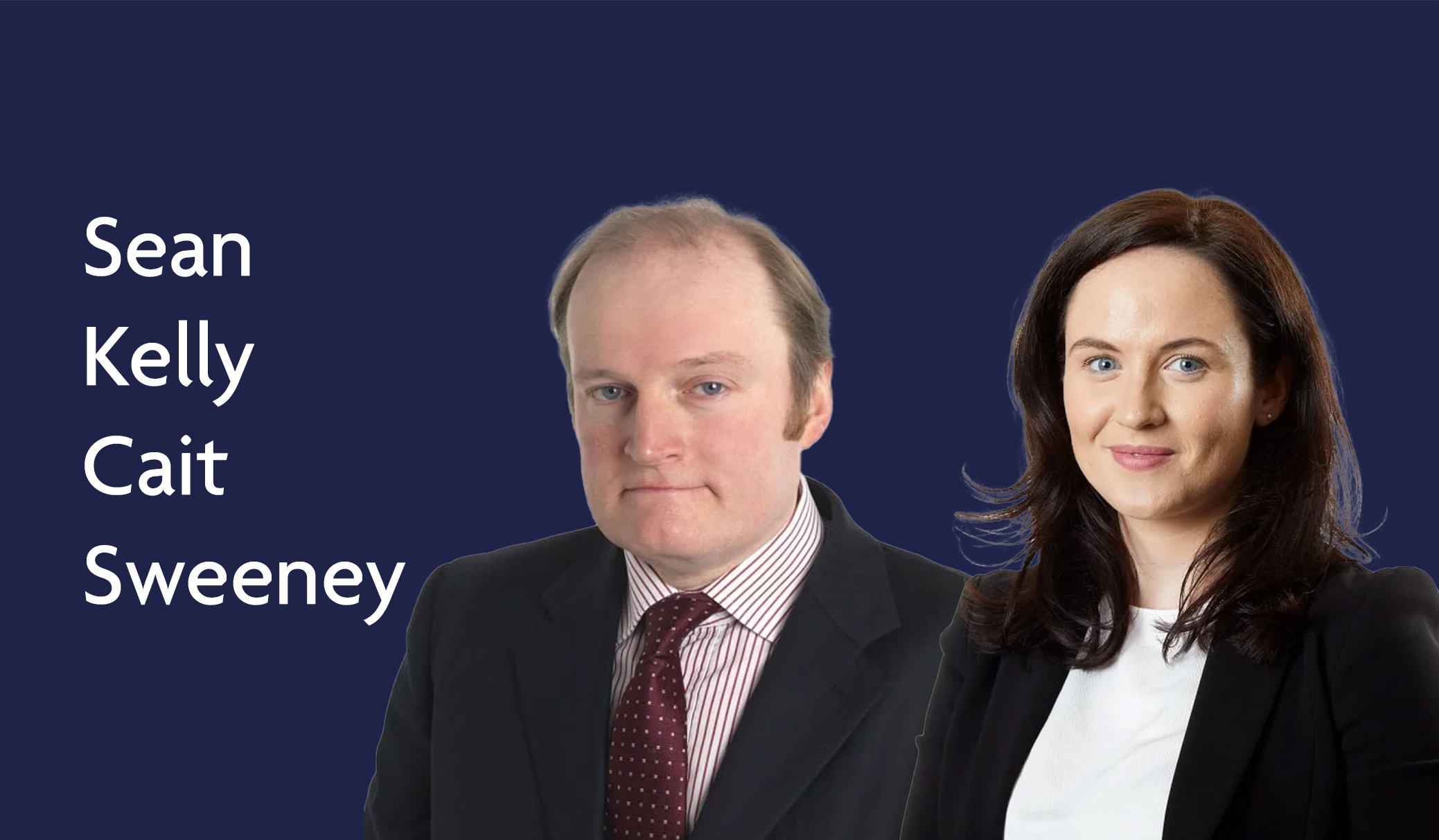The Tractor Tax

Inheritance Tax (“IHT”) is levied on the value of the estate of the deceased or on a gift made by the deceased less than 7 years before death, that is to say a potentially exempt transfer (“a PET”). Transfers to a spouse or civil partner are exempt. After the deduction of the applicable nil-rate band, the IHT which is payable depends on the nature of the assets in the estate or given during the lifetime.
At present, nearly all of the assets used in a working farm will attract either agricultural property relief (“APR”) or business property relief (“BPR”) at 100 per cent. Agricultural land attracts APR limited to the “agricultural value” of the same, while farm equipment, machinery and livestock attracts BPR. The reliefs are mutually exclusive, but the test is broadly the same. Agricultural land will attract APR at 100 per cent if it was occupied by the owner or his or her civil partner for two years before the death or transfer or occupied by someone else for 7 years. Farm business assets attract BPR if such assets were in use not more than two years before the transfer. APR relates to the land. An investor who owns agricultural land can claim APR, but only if the land is farmed.
100 per cent APR and BPR was introduced by the John Major Government in 1992 to ensure that the death of a farmer would not lead to the enforced sale of the farm to pay IHT. This is the regime which everyone has become used to.
As a general rule, farmers die rather than retire. Capital gains tax (“CGT”) and IHT are not payable in relation to the same event. Where the interest in a farm passes on death, the beneficiaries of the estate are treated as having received such interest at the current probate value. This sets their base cost for CGT. They only pay CGT on any future sale to the extent that the price paid exceeds the probate value. As APR and BPR are at 100 per cent, there is every incentive to provide an up-to-date valuation of all farming assets to HMRC with the IHT400 form and this is what is usually done.
The applicability of APR or BPR at 100 per cent on all or the vast majority of farm assets has meant that most farmers have never needed to take tax planning advice unless they have diversified into other businesses, the land has development potential or there is a particularly valuable farmhouse. Normally, significant changes to IHT are brought in over extensive time with prior consultation. There was no consultation here. Indeed, it is reported widely that DEFRA was not informed about the changes until the evening before the Budget.
From April 2026 100 per cent APR and BPR on any transfer by death or lifetime transfer will only apply to the first £1million of assets. Thereafter, APR and BPR will be at 50 per cent. IHT is payable at a rate of 40 per cent.
It is important to set out specifically what was said in the budget (taken from the official transcript)
“From 2026, the first £1m of combined business and agricultural assets will continue to attract no inheritance tax at all ….
…. but for assets over £1m, inheritance tax will apply with 50% relief, at an effective rate of 20%
This will ensure we continue to protect small family farms …
…. and three-quarters of claims will be unaffected by these changes.”
The dots do not represent omitted passages. They record the manner in which the budget speech was delivered.
At first sight, the £1 million figure seems to relate to the whole assets of the farm and not to the interest of an individual spouse or civil partner in the same. There is no reference to partnership in the Budget speech and so it is unclear whether the £1 million figure applies to the capital account of the deceased partner. However, a partner does not have any interest in specie in partnership property, so the figure ought to apply to the capital account (see Popat v Shonchhatra [1997] 1 WLR 1367).
Although this change does not apply solely or even mainly to tractors, it has been referred to imaginatively as “the tractor tax”. In reality, it applies primarily to land. Farm equipment and machinery are depreciating assets. Land is not. The Good Lord is not making any more of it. The value of agricultural land has increased significantly since 1992. Whether this is due to 100 per cent APR is unclear. The value of residential land has also increased over this period. Some of the increase can also be traced to the replacement of agricultural holdings with farm business tenancies. Tenants of an agricultural holding enjoy security of tenure, succession rights and rent protection. Farm business tenancies have none of these rights.
This article is aimed at farmers who own their own farms. Recent reports indicate that institutional landowners are terminating farm business tenancies at an alarming rate in anticipation of the new regime. Farm business tenancies have no real security of tenure. This seems to be an example of the law of unanticipated consequences.
The Chancellor of the Exchequer has stated that the “effective” threshold for IHT on farms could be as high as £3 million. It is difficult to see how this figure has been calculated. The single transferable nil-rate band still applies. Where one spouse or civil partner dies and does not use up their nil rate band for IHT, the balance can be used by the second spouse or civil partner to die. The single transferable nil rate band is now £650,000 (with a higher figure for a dwelling-house), so the “effective” threshold could be said to be £1.65 million. However, the nil rate band of the first to die can only be used by the second if the marriage or civil partnership was ended by death. Insofar as the Government has considered this in assessing the burden on farmers, it fails to take into account the record rate of divorce in the farming community. The individual nil rate band is only £325,000 and there are many “small family farms” with assets of over £1.325million.
As far as it is possible to tell, the Government has not made any sensible estimate of the yield from this alteration to IHT. In reality, it is impossible to do so. The effect of partnership options (as described below) has not been taken into account. We are moving from a regime where farmers have generally not taken tax planning advice to one in which they will be foolish not to do so. The effect of simple and non-aggressive tax planning will probably reduce any anticipated yield significantly. The value of agricultural land may decrease significantly at least in the short term, but the effect on individual regions is difficult to estimate. In reality, IHT will fall on farmers who have not planned ahead due to the speed of the changes or who are just unlucky.
Aside from making full use of the spousal exemption and any transferable nil-rate band, the most obvious form of tax planning which could be used is merely for the farmer to give an interest in the farm or its land to his children during his lifetime and hope to survive for seven years. However, it is not as simple as this. If such a gift is made and the farmer continues to use the land as before, the gift with reservation of benefit rules (“the GWR rules”) will apply.
As regards farms, the effect of the GWR rules is largely untested due to the applicability of APR at 100 per cent. HMRC has no interest in taking points which do not lead to additional IHT being payable. Realistically, where a farmer gives land to a child and then continues to use that land in his own business, the GWR rules will apply unless there is a tenancy agreement providing for rent at a market rate. The rent would have to be paid or the arrangement might be viewed as being a sham. The farm might not be able to sustain such a payment.
What farmers must not do is make unadvised sales during their lifetime to avoid the proposed changes to IHT which will generate a CGT charge.
To date, partnership has not generally been viewed as part of farming tax planning due to the availability of 100 per cent APR or BPR. However, partnership does enable value to be transferred between generations in a manner which other forms of business association do not. In this regard, there are two situations to consider. The first is pre-existing partnerships. The second is partnerships to be formed in response to the changes.
Pre-existing partnerships
Partnerships property is held under the trust created by section 20(1) of the Partnership Act 1890. Section 20(1) removes the need for a document of transfer for land or any other asset entering a partnership (but not leaving it). The interest of a partner is manifest in his or her capital account as there is no interest in specie. Where a partner transfers property into the partnership, he is credited with its current value as an addition to his capital account. Partnerships are not required to revalue assets. A farming partnership might have land included as partnership property which was brought into the partnership decades ago. The capital profit (that is to say the profit generated on sale) is divided in profit shares unless the contrary is agreed.
Not all farming partnerships have a written partnership agreement or deed. Where they do, then there will usually be a clause giving the surviving partners the option of purchasing the interest of a deceased partner. This will either be at historic book value or subject to revaluation. In determining which applies, the Court uses normal principles of contractual construction and there is no presumption either way (see Drake v Harvey [2011] EWCA Civ 838). Up until the end of the last century at least, the former was the norm as revaluation takes time and costs money in surveyor’s fees. The effect of this is that the interest of the deceased could be purchased at a very low historic cost. Presumably, it would be this cost which is used to calculate IHT.
Even where there is a partnership agreement, there may be real difficulties in identifying what is partnership property and (thereby) subject to an option. Even though no transfer document is required, land and any other assets can only be transferred into a partnership by express agreement. The Court does not treat the partnership accounts as helpful in establishing such an express agreement as many accountants include all assets used by a partnership as partnership property even if there is no agreement to do so (see Wild v Wild [2018] EWHC 2197 (Ch)).
I have had many claims where the estate of the deceased has fought against such a book value option. This is on the basis that land is held outside the partnership, on the basis that the partnership agreement is not binding (because more recent partners have not been made parties to the same or accepted its terms) or on the basis that the option (when properly construed) enables revaluation. Presumably, the effect of the changes will be that such arguments will no longer be pursued. The estate will just fall on its sword or deals will be negotiated between the estate and the continuing partners at the threshold for IHT.
Could the partners in a pre-existing partnership enter into an agreement including such a book value option? A disposition is only a gift if this is intended (see section 10 of the Inheritance Tax Act 1984). It is not a gift if “it was such as might be expected to be made in a transaction at arm’s length between persons not connected with each other”, that is to say a normal commercial transaction. It would be difficult for HMRC to argue that such a partnership agreement operated as a gift given that this type of agreement was the norm and is still used. In any event, such an option is against the interests of the first to die, but this might not necessarily be the parent.
New partnerships
Where a farmer admits a child as a partner, the agreement will not create a PET unless the initial capital account of the child is credited with part of the value of the property transferred into the partnership. If the farmer is credited with the full value of the property transferred by him into the partnership as his initial capital account, then there is no gift. The partnership agreement can give the child a significant share of the profits of the business moving forward. As capital profits follow income profits, the child will receive a share in the increase in the value of the partnership property from the time of his or her admission. In addition, if the farmer has drawings which exceed his share of profits, this will over time reduce his capital account naturally. As a partner has no interest in individual assets, the only interest which can be transferred on death is this capital account. Accordingly, this natural reduction will reduce the IHT. The partnership share of the child can be increased each year without varying the partnership agreement.
The requirement that property should be brought into the partnership at full value means that this type of arrangement is only valuable for tax planning looking at future growth.
This type of arrangement also works in principle for LLPs. However, LLPs are not usually used to hold assets. The arrangement does not work with companies because shares which have a right to participate in profits have a value and will be classed as a gift.











